Doghole Port Media
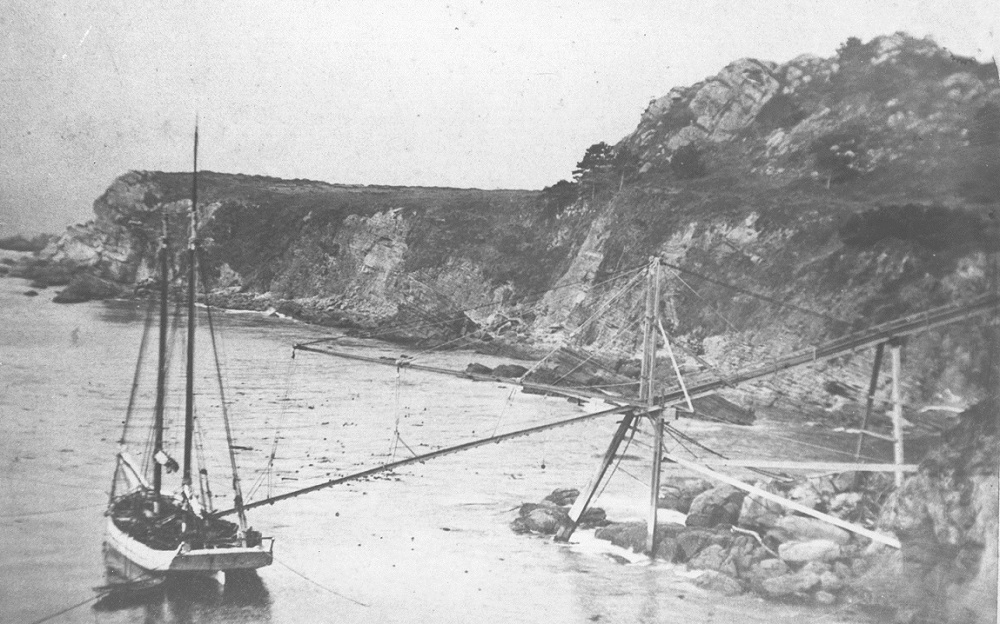
This waiting schooner at Timber Cove is moored at three points perilously close to shore to receive its cargo
Credit: Fort Ross Conservancy
Download the Media Advisory (PDF, 50Kb), Fact Sheet (PDF, 1MB) and media content from this page.
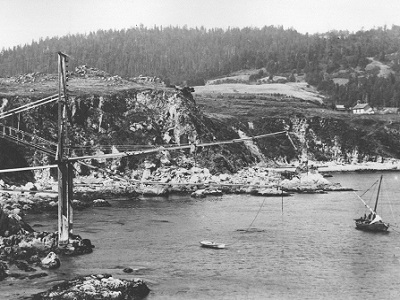
Fort Ross’s lumber chute linked its shoreside lumber operations to oceanic transport that carried boards, cord wood, tan bark, posts and railroad ties out of the Redwood Coast to cities around the world
Credit: Fort Ross Conservancy
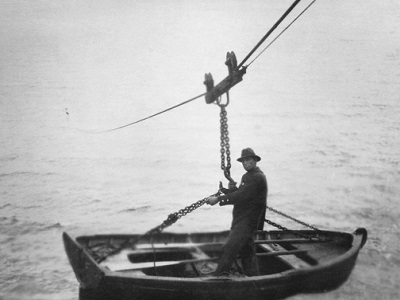
Wire chutes also carried people and supplies to waiting vessels
Credit: Fort Ross Conservancy
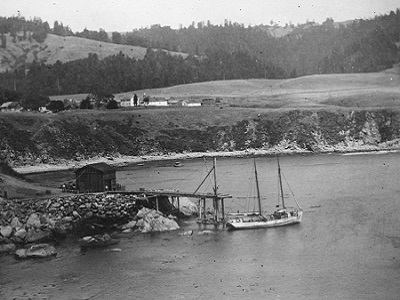
Due to the harsh terrain and rough sea conditions, wharves and piers were uncommon along the northern California coast. The wharf at Fort Ross survived only a short time before it was destroyed by a 1901 storm
Credit: Fort Ross Conservancy
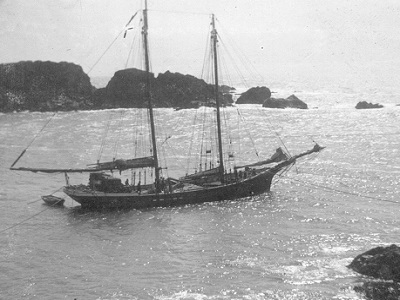
Small schooners were well-suited to loading at doghole ports due to their maneuverability and shallow draft. This two-masted schooner is loading cordwood from a wire chute at Fisherman’s Bay near Stewarts Point
Credit: Fort Ross Conservancy
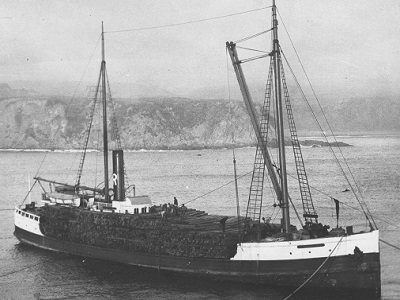
At the end of the 19th century, steamships began servicing some of the doghole ports and were able to carry larger loads
Credit: Fort Ross Conservancy
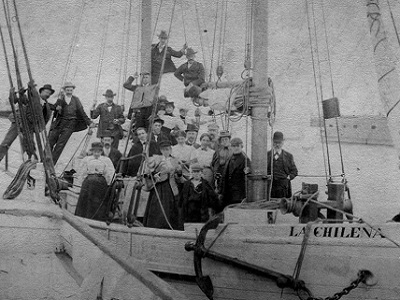
The principal route to and from Fort Ross was by sea until 1925. George W. Call used his schooner La Chilena to provide weekly service between Fort Ross and San Francisco
Credit: Fort Ross Conservancy
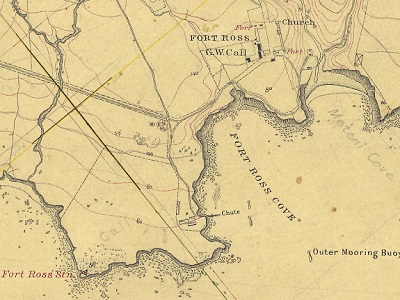
The U.S. Coast Survey T-sheets from 1876 shows the location of lumber chutes along the coast. This excerpt is of Fort Ross Cove with the chute clearly indicated along with the mooring buoy positions.
Credit: NOAA's Historical Map & Chart Collection
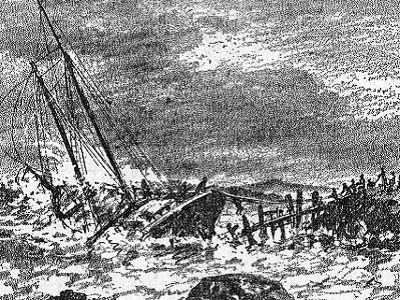
Shipwrecks were a frequent occurrence at doghole ports. The two-masted wooden lumber schooner J. Eppinger wrecked in Fort Ross cove on 2 January 1901 during a storm. The schooner broke free from its mooring and crashed into the wharf.
Credit: Fort Ross Conservancy
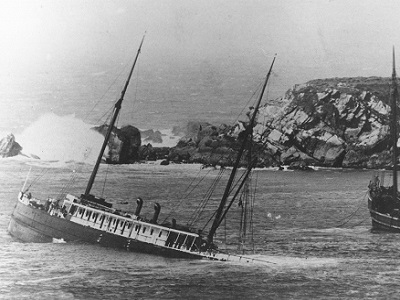
The 225-foot long steel-hulled coastal steamship Pomona sank off Fort Ross cove on 17 March 1908 after hitting a submerged pinnacle. The shipwreck lies in 30 feet of water and with its bow broken over the wash rock where it eventually ran aground. Remains of the vessel on the seafloor include its propeller shaft, boilers, hull plates and frames. A debris field surrounds the wreck resulting from it being dynamited during salvage activities. The Pomona is listed on the National Register of Historic Places.
Credit: Fort Ross Conservancy
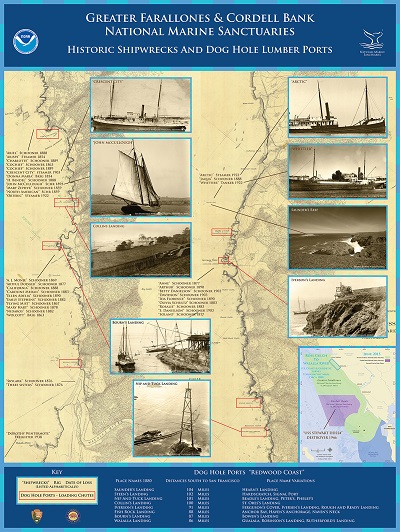
Map of shipwrecks and doghole ports in Cordell Bank and Greater Farallones National Marine Sanctuaries
Credit: Robert Schwemmer, NOAA ONMS
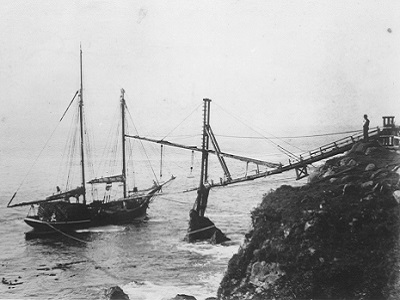
A trough chute, shown here at Salt Point Landing-Gerstle Cove, was the most commonly used means to load lumber at the doghole ports. Lumbermen slid individual pieces of lumber down to the waiting vessel.
Credit: Fort Ross Conservancy
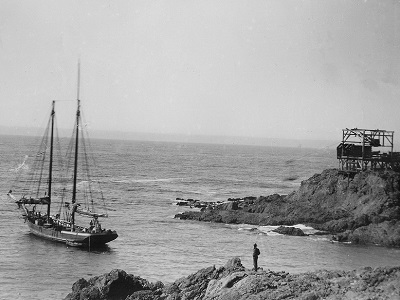
Wire chutes advanced lumber loading methods in the 1870s. The wire chute, shown here at Bihler-Black Point Landing, used a long wire stretched from shore to an anchored vessel. Packaged bunks of lumber were slid down the wire to the waiting vessel.
Credit: Fort Ross Conservancy
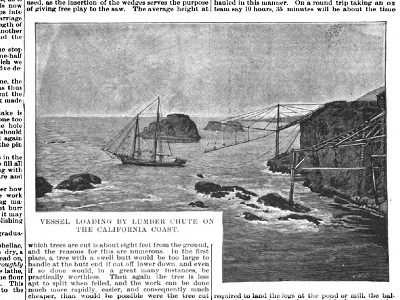
Scientific American article on California logging included a narrative on how vessels were loaded by chutes.
Credit: Scientific American Supplement 24 May 1890
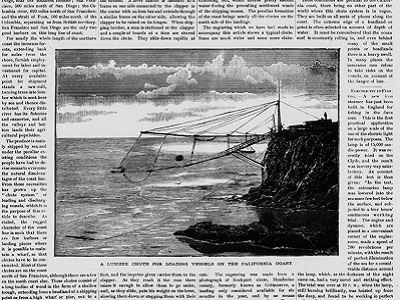
The Pacific Rural Press in 1884 describes lumbering activities on the California coast.
Credit: Pacific Rural Press 20 September 1884
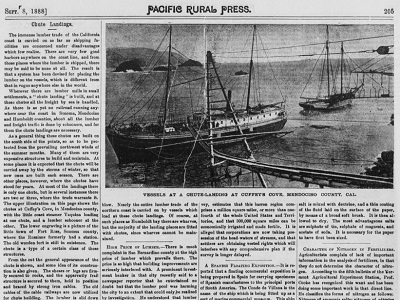
The Pacific Rural Press in 1888 featured an article on lumber chutes along with photos of a chute at Fort Ross and Cuffey’s Cove.
Credit:Pacific Rural Press 8 September 1888
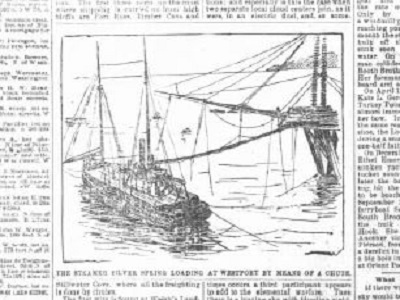
The San Francisco Chronicle published a detailed description of loading at doghole ports in 1894
Credit: San Francisco Chronicle 6 May 1894
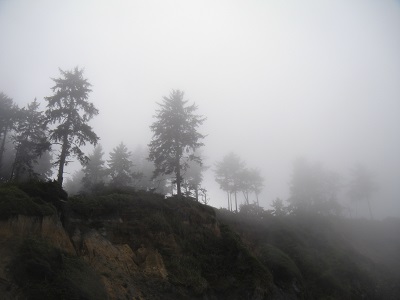
Coast Redwoods
Credit: Jenna Batchelder, Humboldt State University
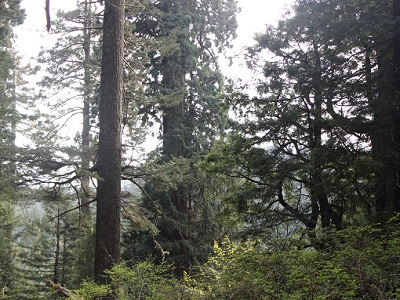
Redwood forest
Credit: Jenna Batchelder, Humboldt State University
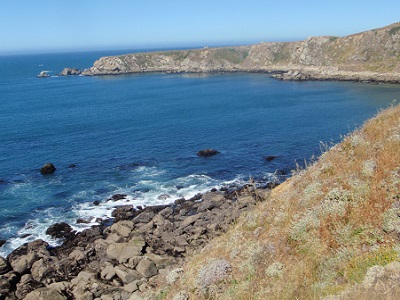
The northern cove at Fort Ross contains iron bolts and pins, evidence of the lumber chutes that once hung from the cliff.
Credit:Tricia Dodds, CA State Parks
B-Roll Video
Credit: NOAA

